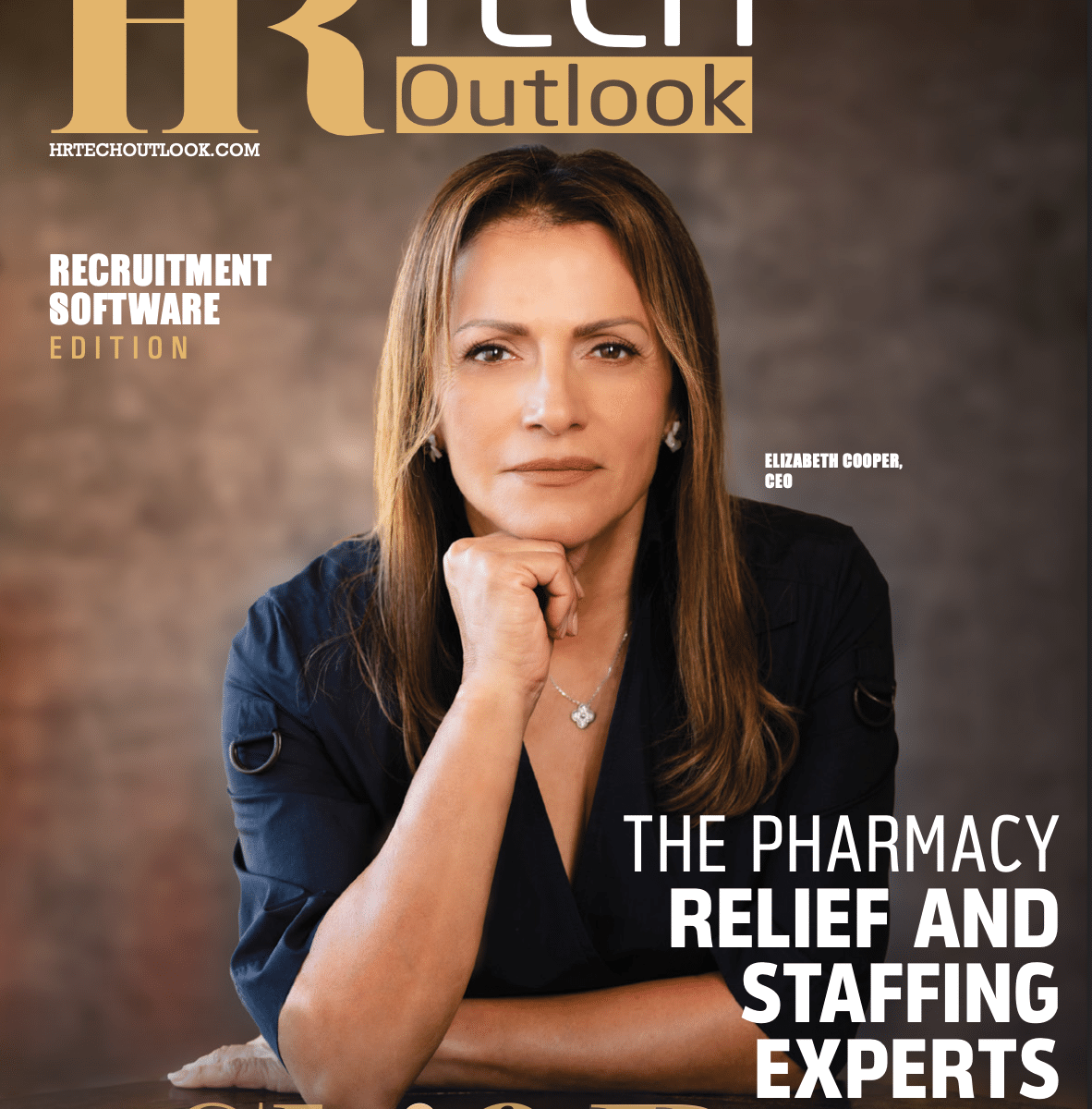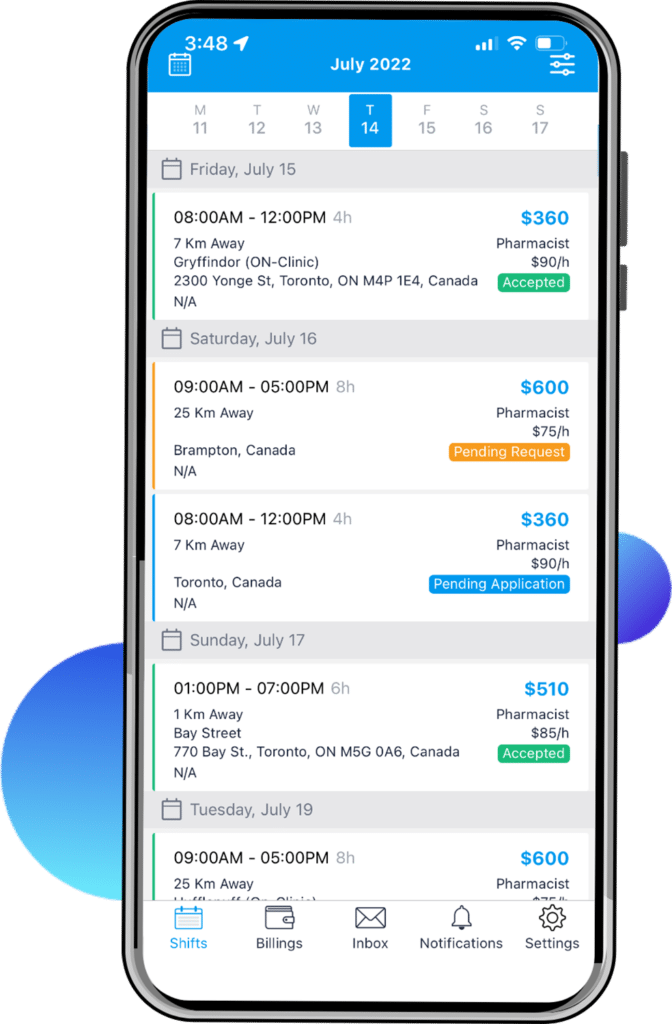We’re honored to be featured on the cover of HRTech Outlook magazine! At ShiftPosts, we’re shifting how people look at pharmacy staffing with our innovative digital platform and pharmacist-to-shift matching capabilities. Discover how we’ve balanced quality and efficiency by streamlining pharmacy staffing with an all-encompassing app that lets you find and fill shifts in minutes. You can also hear from our CEO, Elizabeth Cooper, about what makes our company unique and how we’re changing the game with our all-in-one platform and unique approach to all healthcare staffing.
Benefits and Considerations of Owning a Pharmacy
Acquiring and owning a pharmacy can be a lucrative and rewarding business venture. However, it requires significant investment, commitment, and knowledge of the pharmaceutical industry to succeed. If you are interested in pharmacy ownership, read on to learn about the benefits and considerations of owning a pharmacy, including the cost of starting, potential profits, licensing requirements, and more.

Owning a Pharmacy
Pharmacy ownership involves managing and operating a business that dispenses medication and provides health-related services to customers. When acquiring and owning your own pharmacy, you become responsible for the entire operation, including complying with state and federal regulations, maintaining accurate and detailed records, employing licensed pharmacists, and training your staff properly. You also need to be aware of changing industry standards, market trends, and emerging technologies to help you provide high-quality care to your customers.
It’s essential to understand everything that goes into acquiring and owning a pharmacy before diving in to be sure it’s something you’re prepared to take on.
Who Is Pharmacy Ownership For?
Acquiring and owning a pharmacy is a good option for individuals passionate about healthcare, serving their community, and providing quality patient care and entrepreneurship. If this sounds like you, consider owning your own pharmacy. As a prospective pharmacy owner, you should have a deep understanding of the industry, excellent managerial skills, and be willing to invest time, money, and effort into the business.
While pharmacy ownership isn’t for everyone, you can make it happen with a strong willingness to succeed and a plan to help you do it.
Start-Up and Acquisition Costs
Buying an independent pharmacy requires high start-up costs. These funds are necessary to cover leasing or purchasing commercial space, buying equipment, stocking inventory, hiring staff, and obtaining required licenses and permits.
On the other hand, you could consider buying an existing pharmacy, which is less costly but can be risky since you’re taking on someone else’s liabilities and assets. As you consider buying a pharmacy, research both options to decide which would be best for you.
Funding Options
Financing a pharmacy can be challenging, but various funding options are available if you need them, including traditional bank loans, Small Business Administration (SBA) loans, and grants. You could also consider partnering with investors, joining a franchise, or seeking crowdfunding to raise capital for buying a pharmacy
Cash Flow and Profitability
As a pharmacy owner, you must maintain a positive cash flow and profitability to maintain your pharmacy and ensure you can provide quality services to your customers. To manage your cash flow and profitability, make sure you are:
- Managing expenses
- Negotiating with suppliers
- Implementing efficient inventory management systems
- Diversifying revenue streams
You can also invest in pharmaceutical technology and marketing strategies to attract customers and help you stay competitive.
How Much Does It Cost to Start a Pharmacy?
Acquiring a pharmacy can be extremely rewarding, but it is an expensive venture. Start-up costs can range anywhere from $880,000 to $1,800,000, though the cost depends on several factors, including:
- Pharmacy location
- Pharmacy size
- Medications provided
- Services offered
- Regulatory requirements
Other cost factors could include:
- Current market — As you are considering buying a pharmacy, research the market to get insights into start-up costs, expected revenue, and potential challenges you may face.
- Existing history — If you want to take over an existing pharmacy, assess its current revenue and expenses, profit margin, customer base, existing contracts, and insurance providers to identify any possible concerns.
- Market competition — Analyze the area’s demographics, the market’s competition, and the community’s unique needs. With this information, you can decide which services and products to offer and a pricing strategy that keeps you competitive.
How Much Profit Can You Earn As a Pharmacy Owner?
As an owner, you could earn anywhere from $400K – $700K, depending on location, and the pharmacy could profit around $4 million annually. Several factors can influence your profit, including the number of prescriptions filled, the type of services provided, overhead costs, front-end sales, and inventory costs.
Script Count
One of the most significant factors in acquiring and owning a pharmacy is filling prescriptions, meaning the script count is critical to your profitability. The more prescriptions you fill, the more revenue you’ll bring in.
Type of Services
If you offer services beyond filling prescriptions, like medication therapy management, immunizations, and health screenings, you can increase your revenue streams and stand out from your competitors.
Overhead Costs
Overhead costs such as rent, utilities, and staffing can significantly impact profitability. By using effective cost management and operational efficiency strategies, you can find ways to reduce overhead costs and improve profitability.
Front-End Sales
Front-end sales such as over-the-counter medications, health and beauty products, and medical supplies can contribute to the revenue of your pharmacy. Consider offering a diverse range of products, implementing competitive pricing, and engaging in effective marketing.
Inventory Costs
Acquiring and owning your own pharmacy means you are responsible for managing inventory and reducing costs. You’ll need to balance maintaining sufficient inventory levels and minimizing the risk of excess inventory, which can lead to spoilage and waste.
What Are the Licensing Requirements for Pharmacy Owners?
Pharmacy ownership requires compliance with various legal and regulatory requirements, including licensing, compliance with state and federal regulations, and insurance and liability considerations. When buying a pharmacy, you’ll be responsible for maintaining all the proper licensing.
Pharmacy licensing may vary by state but generally will include:
- Forming a business entity
- Applying for an Employer Identification Number (EIN)
- Registering a business name with the state
- Registering for state and federal taxes
- Registering to distribute controlled substances
- Applying for supplemental licenses for additional services
- Applying for a National Provider Identifier (NPI) number
Compliance With State and Federal Regulations
Part of pharmacy ownership is complying with state and federal regulations that govern the handling, dispensing, and sale of medications. The regulations cover record-keeping, drug disposal, and controlled substances. Failure to comply with these requirements and regulations can result in penalties, fines, or losing your pharmacy’s license.
Insurance and Liability Considerations
When owning a pharmacy, you must have adequate insurance coverage to protect against potential liability claims. Liability risks include errors in dispensing medications, product liability claims, and general liability claims. Adequate insurance coverage can help protect your pharmacy’s assets and ensure you can continue operating in case of a liability claim.
How Long Does It Take to Start a Pharmacy?
The timeline for pharmacy ownership can vary based on several factors, including:
- Operational considerations
- Securing a location
- Obtaining permits and licenses
- Establishing relationships with vendors
- Setting up necessary infrastructure and systems
- Staffing and human resources
- Recruiting and hiring pharmacists, technicians, and support staff
- Training your team on pharmacy operations and quality care
- Inventory management and supply chain
- Establishing relationships with suppliers
- Negotiating pricing and payment terms
- Tracking inventory levels
- Managing expiration dates
- Establishing a robust supply chain
- Marketing and customer acquisition
- Creating effective marketing strategies
- Developing a strong online presence
- Building relationships with local healthcare providers
- Offering additional services to stand out from competitors
If you are proactive and diligent, you could have your pharmacy open in as little as six months. However, based on the above factors and allowing for probable delays, you can expect to go from buying an independent pharmacy to opening day in about a year.
Is Acquiring and Owning a Pharmacy Right for You?
There are a lot of considerations that go into owning a pharmacy, and you’ll need to weigh the pros and cons of pharmacy ownership to determine if it’s right for you.
If you aren’t sure you’re ready to acquire your own pharmacy yet but still want to make a difference in the industry, consider joining ShiftPosts. You can cover open shifts, help reduce understaffing, and increase your earning potential with the help of our convenient staffing platform. Contact us to learn more today.
Are Pharmacy Students an Untapped Resource for Improving Efficiency and Delivering Optimal Patient Care?
Pharmacists are responsible for ensuring patients understand and use their medications safely and appropriately. However, the increasing demand for pharmacy services often overburdens pharmacists with administrative tasks like filling prescriptions, managing inventory, and counseling patients. They also have to perform medication reviews, which is where pharmacy students, depending on the province where they live, can step up and shine.
Pharmacy students are the industry’s future, but they are often an untapped resource when it comes to improving pharmacy efficiency and delivering better patient care. The students are eager to apply their knowledge and can also represent a cost savings to the pharmacy.
So, what are medication reviews, why are they essential for patient care, and why are pharmacy students an excellent choice for this role?
What Are Medication Reviews, and Why Do We Need Them?
A medication review is a one-on-one meeting between a patient and a pharmacy professional where they critically examine the patient’s prescriptions. This review aims to ensure patients are taking their medications correctly while also optimizing medication therapy, minimizing adverse drug reactions, and improving patient outcomes.
Medication-related problems are a significant contributor to morbidity and mortality and a leading cause of hospitalization and healthcare costs worldwide, which is why it’s so important to conduct these reviews regularly. During this appointment, a pharmacy student can also suggest appropriate medication alternatives like generic or comparable drugs in the same class, which can help eliminate redundant drug therapies. Ultimately, a medication review can be motivating, corrective, and life-changing.

After a Medication Review
When a medication review is done correctly, it will:
- Focus on self-management for the patients and an understanding of patients’ medications.
- Identify and fix problems patients may be having.
- Answer patients’ questions and concerns.
- Leave patients feeling informed and empowered.
Who Can Perform Medication Reviews?
Pharmacists are trained to perform medication reviews, but registered pharmacy students are also permitted to conduct reviews as long as a licensed pharmacist supervises them. These appointments last anywhere from 30 to 60 minutes, allowing the pharmacist or pharmacy student to complete a comprehensive medication assessment that identifies and solves drug-therapy problems.
Leveraging the Skills of Pharmacy Students
Since pharmacy students are trained in pharmacology, pharmacotherapy, and medication management, they are well-equipped to perform patient medication reviews. And when pharmacy students are used as a resource for conducting these reviews, pharmacists can free up their time to perform other critical tasks in the pharmacy.
Medication reviews are also an untapped source of revenue; just five reviews a day can bring in an additional $300 per day, resulting in over six figures of additional revenue per year. That revenue is lost when pharmacists don’t have time to conduct these reviews. So, leveraging the skills of pharmacy students for medication reviews brings in those additional funds while also allowing the pharmacist to continue running the pharmacy.

What Other Functions Can Pharmacy Students Perform?
In addition to conducting medication reviews, pharmacy students are well-suited to complete other tasks around the pharmacy.
Medication Tasks
- Medication history interviews
- First dose teaching
- Food-drug interaction counseling
- Patient education on prescription and over-the-counter medications and devices
- Monitor medication therapies by performing profile reviews, interpreting laboratory values, and ensuring drug regimens are consistent with medication use guidelines and protocols
- Administer vaccinations when applicable
- Perform pharmacokinetic monitoring
- Review documented adverse drug reactions/allergies and report new occurrences
Patient Care
- Discharge counseling
- Assessment of education and adherence
- Participate in interdisciplinary patient care rounds
- Work collaboratively with treatment teams to maximize individual patient outcomes
- Blood pressure screenings and escalation of abnormal values to primary care providers for further investigation
- Create updated medication lists for patients upon discharge from a hospital stay or end-of-clinic appointment
- Establish and interpret patient information – active problem list, past medical history, physical exam data, laboratory data, hospital course, medication history, medication profile, pharmacokinetic evaluation
- Administer vaccinations when applicable
- Assess the patient’s progression to achieving desired medication treatment goals
Administrative Tasks
- Perform computer order entry and claim adjudication
- Prepare vaccinations, and confirm appropriateness through patient profile review and vaccination registries
- Prepare blister packs
- Prepare accurate extemporaneous compounded products
- Review medication orders for appropriate dose, duration, frequency, dosage form, indication, and drug interactions
- Retrieve, evaluate, and provide drug information to health care providers, answering general and patient-specific drug information questions
- Develop and recommend appropriate therapeutic plans, identify and resolve drug-related problems, communicate with other health care team members, follow through, and document in the electronic record
- Promote health, wellness, and disease prevention
By delegating some of these work items to a pharmacy student, pharmacists could be saving as much as $148 per task. That means if a pharmacy student is completing 20 of these tasks daily, the pharmacy is saving nearly $3,000 a day in overall costs.
Utilize Your Pharmacy Students
Pharmacists can free up their time to focus on other critical tasks, save money, and increase revenue by involving pharmacy students in medication reviews and other pharmacy functions. When pharmacists utilize their pharmacy students’ skills and expertise, they ensure patients receive prompt and high-quality care at all times.









